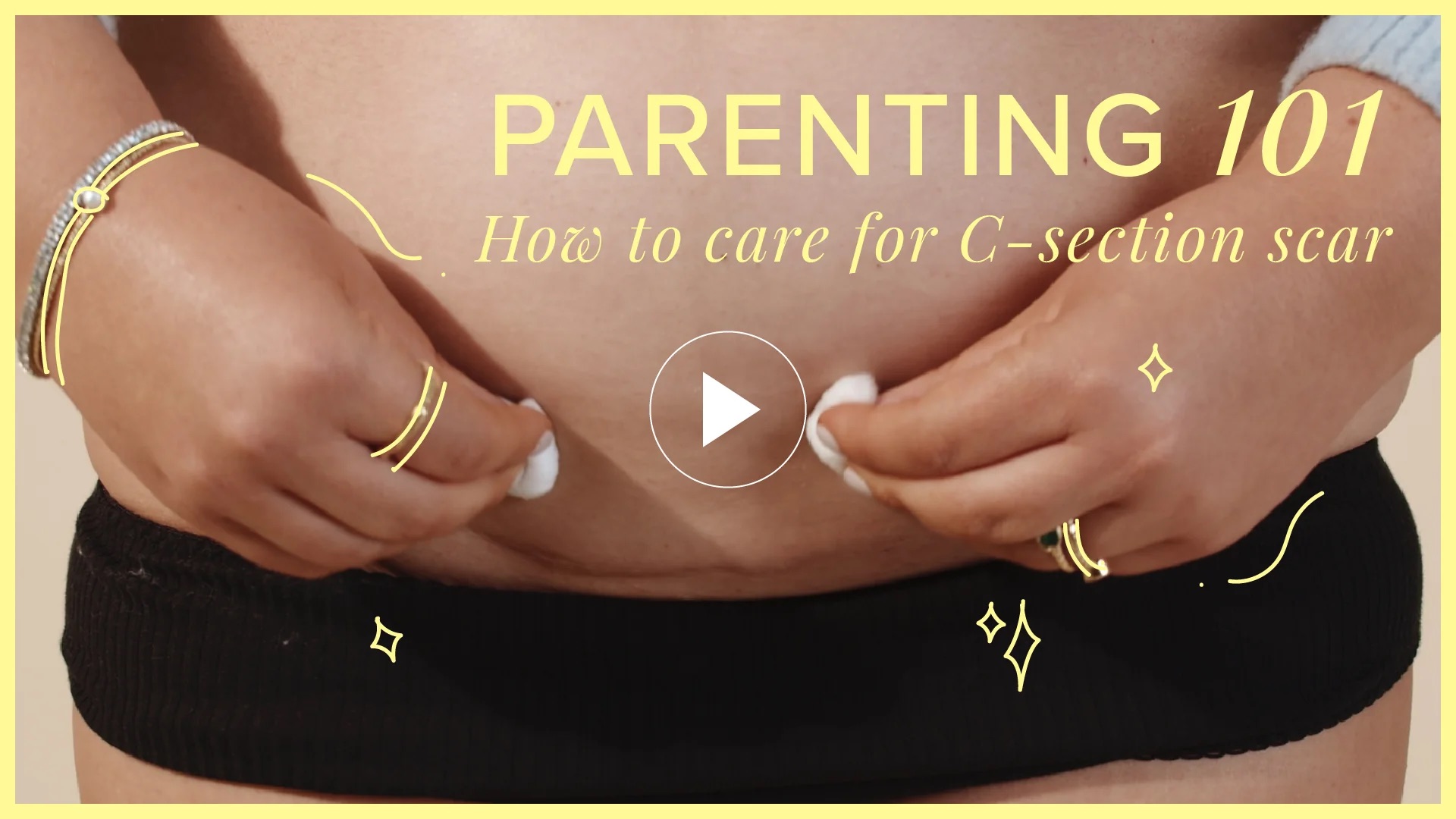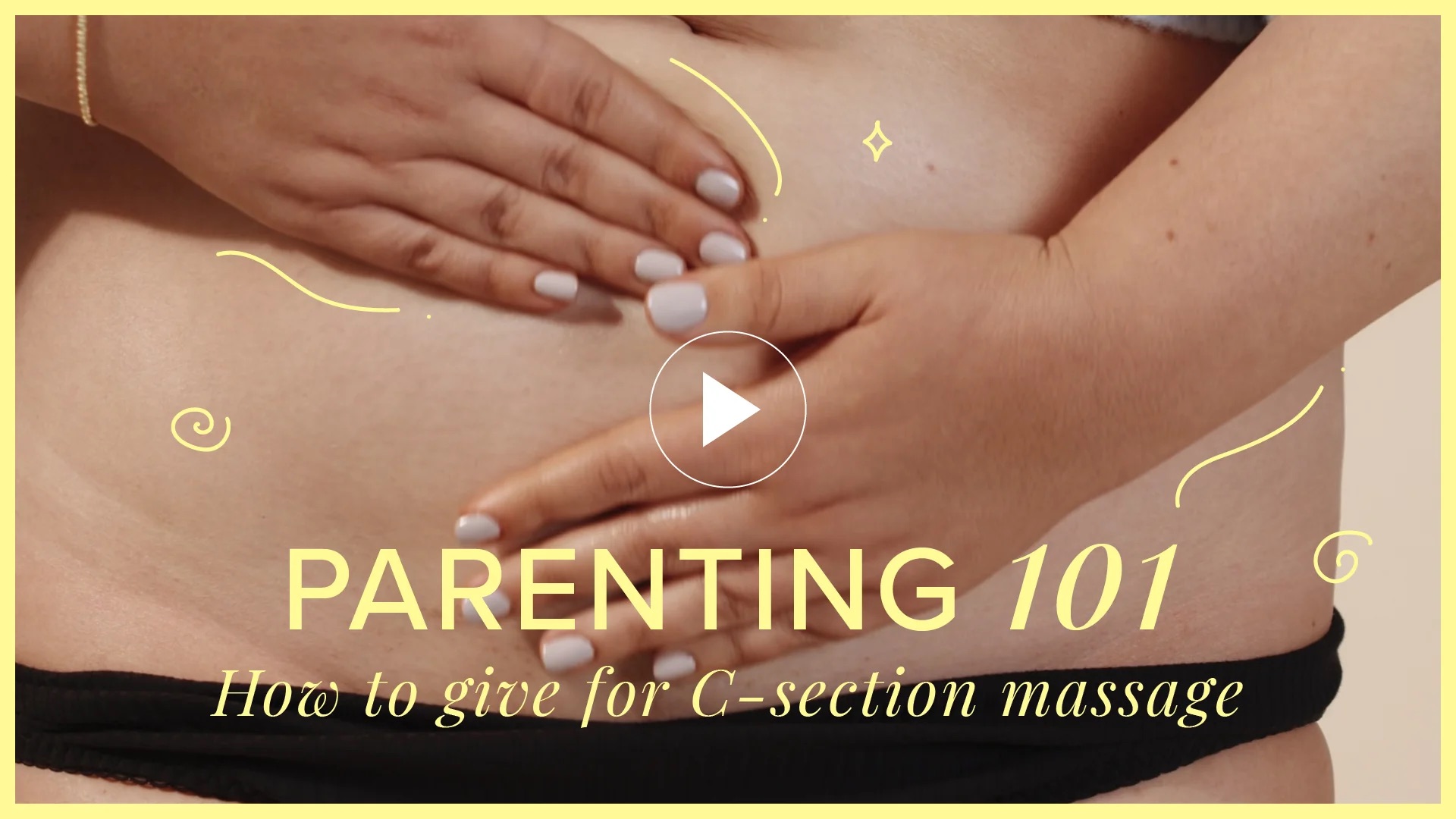Caring for your body after a caesarean is critical as you’ll have a delicate abdominal wound to nurse and keep clean as it heals. You will also have to make some adjustments around the house as you may be immobile for a few days or weeks. This is a window of time where you’ll find value in the help from others, like; cooking, helping with the washing and taking other children to and from daycare or school. Maybe order your groceries online, just ensure someone else carries the bags inside and unpacks the food for you.
Impacts to your body, what you can and can’t do
In terms of what you can do … you can keep clean and comfortable. After the birth, after your catheter and IV drip have been removed and pending the level of feeling in your lower body, your midwife will help you to wee in the toilet and take a shower. This first shower can be intensely nerve wracking as you’ll probably see steri-strips covering quite a raw abdominal wound. Deep breaths! Warm, running water is fantastic for cleanliness so take this opportunity to enjoy it. Note; it’s advised to avoid soaps, fragrant oils and/or wiping or scrubbing motions around the scar area in the early days to avoid irritation.
After your shower, gently pat dry your body and belly and allow your midwife to redress your wound. From here, slip into some postpartum pants to accommodate your bleeding and some comfortable clothing that allows your body to move without restriction and your skin to breathe.
When you return home, the midwife will continue to change your dressings and check on the healing of your wound for the first days. After a few days (timings are different for all), you’ll be encouraged to expose the wound to fresh, clean air to allow the site to dry and scab. During this time, continue to shower but avoid soaps and irritating fabrics. Smooth, firm (but not overly tight) high waisted briefs are great. You may want to try the ModiBodi Postpartum Control Brief, SRC Recovery Shorts or the 3-in-1 Pregnancy, Postpartum & C-Section Original Belly Band to support your muscles coming back together.
Keeping your scar clean during this time can be made a lot easier with cotton balls and damp q-tips. Both can be used to softly pat or wipe away any dried blood or dampness.
What you can’t do? In the first 6 weeks this list may feel relatively long. To summarise, you should avoid driving, heavy lifting (including lifting any other children) and all other strenuous movement.

How to care for your scar
Caring for your scar is about keeping it clean, dry and avoiding anything that could rupture your stitches, cause further pain or lead to an infection. Daily showers, clean underwear (especially if you’re wearing high-waisted briefs that cover the scar) and changing your dressing as instructed, are the basics. Keeping your scar warm with layers of clothing can also be helpful as it’ll promote blood flow to the area.
While strenuous movement is not advised during the healing period, gentle movement such as slow walks around the house can help your circulation, digestion and muscle recovery. Pending the stage of your healing, gentle massage can also help to manage increased sensitivity and numbness, as well as reduce pain and restriction around the abdominal region. Make sure you check with your GP or midwife prior to commencing massage techniques.
Linked below is a video demonstrating the above. If or when you feel pain, or whenever you're in doubt - it’s always best to stop and contact your healthcare provider.
Above all else, rest, rest, rest. Lay down and put your feet up as often as possible!













